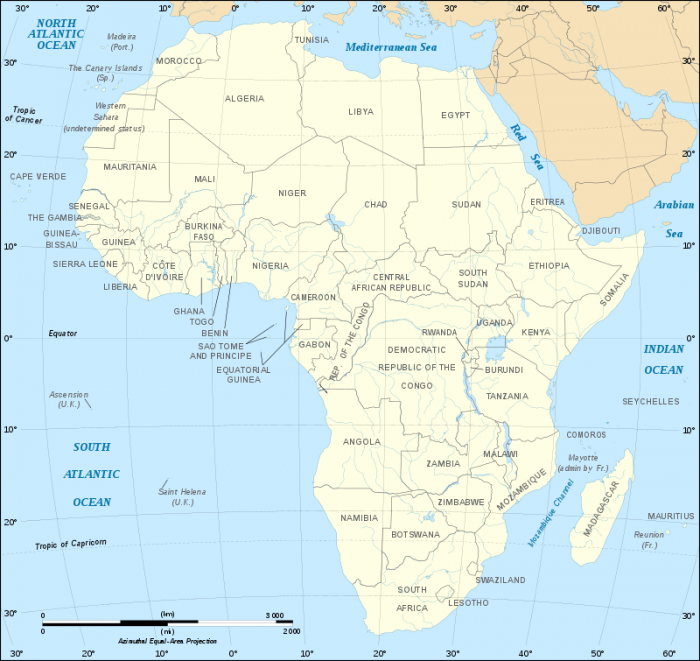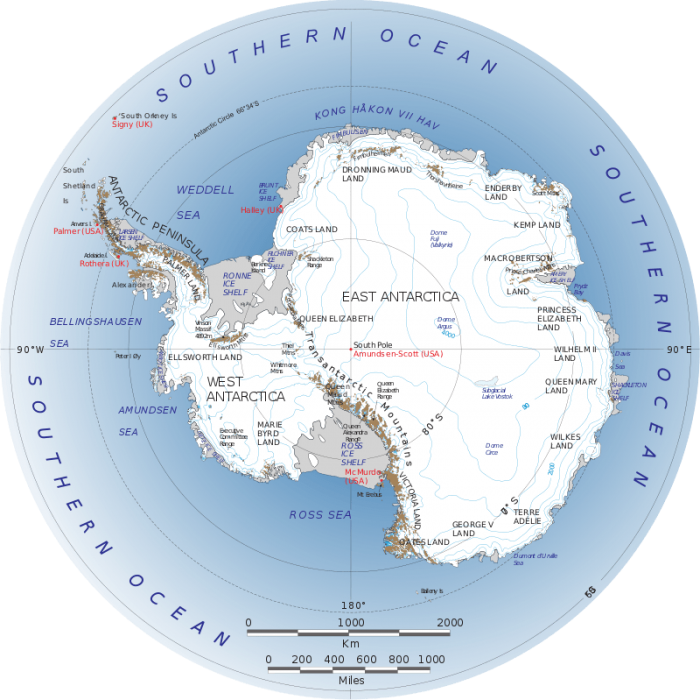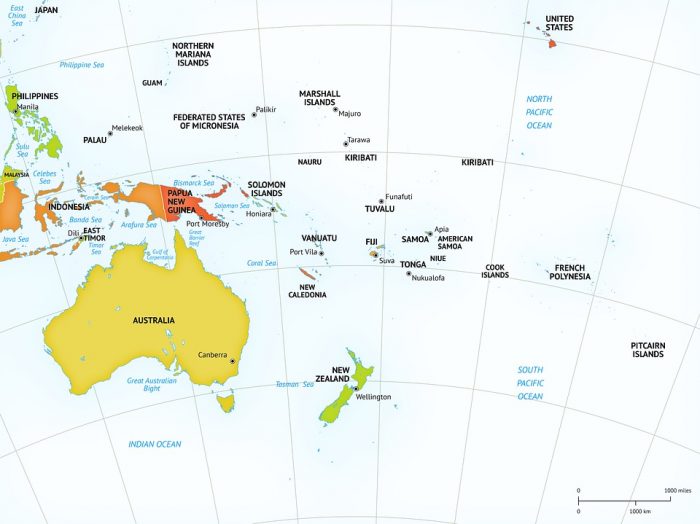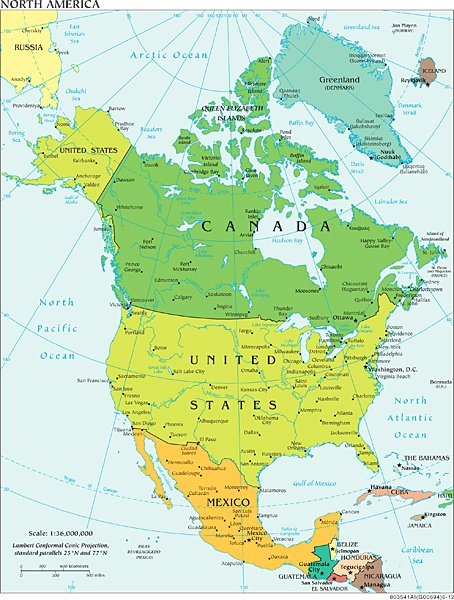
Our planet is divided into seven continents and five oceans. The seven continents are North America, South America, Asia, Africa, Australia, Europe, and Antarctica. While there are some small islands surrounding these main continents that people live on, most of the world population lives on one of the seven continents. The seven continents are divided by five different oceans. The oceans are the Pacific Ocean, the Atlantic Ocean, the Indian Ocean, the Arctic Ocean, and the southern ocean.
Let’s take a closer look at the seven continents and five oceans, and learn some facts about each of these unique landmasses and bodies of water.
“The world is big and I want to have a good look at it before it gets dark.” — John Muir
The Supercontinent Of Pangea
There weren’t always 7 continents. The current seven continents on the planet Earth were once all connected with one another. Around 175 million years ago there was a single supercontinent known as Pangaea. Over millions of years, the shifting of the tectonic plates broke Pangaea up into seven pieces that shifted into their current position. Even now, the continents are still moving thanks to the movement of the tectonic plates, although this movement is so slow it seems imperceptible to all those but scientists who monitor the movement with specialized research equipment.
A Closer Look At The Seven Continents

A political map of Africa. Photo: By Derivative works of this file: BobarinoAfrican continent-fr.svg: Eric Gaba (Sting – Sting) – African continent-fr.svg, CC BY-SA 2.5, https://commons.wikimedia.org/w/index.php?curid=5387989
Africa
Africa is a large continent, with a landmass over 28, 489,000 km² or 11,670,000 mi.². The entire continent of Africa is thought to be home to around 1,000,120,300 people, meaning that approximately 15% of the human population lives in Africa. Africa is home to extremely diverse groups of people, who live within Africa’s many different countries. There is disagreement about the exact number of countries within Africa, as different organizations classify an independent country in different ways, though at least one estimate places the number of countries on the continent as 54.
Because Africa is such a large continent, it also has many different climate types in addition to different countries and different groups of people. Northern Africa tends to be drier than southern Africa, which has more temperate, moist climates. Africa is also home to many unique species of animals, with over seven thousand different types of land mammals living on the continent.
Antarctica

Map of Antarctica with major settlements labeled. Photo: By Landsat Image Mosaic of Antarctica team – extracted from https://lima.nasa.gov/pdf/A3_overview.pdf, Public Domain, https://commons.wikimedia.org/w/index.php?curid=9570048
Antarctica is the least populated continent in the world. In general, the only people who live on Antarctica are scientists and researchers of one form or another. Antarctica has an estimated population of only about 5000 people, and the largest city in Antarctica is McMurdo Station, which has a population of approximately 1260 individuals. Despite Antarctica having a small population, it is a truly massive continent covering upwards of 12,900,000 km² or 5,400,000 mi.². Antarctica is covered in ice year-round and has some of the harshest weather on the globe.
“The world is not in your books and maps, it’s out there.” — J. R. R. Tolkein
Asia

A map of Asia with national flags representing countries. Photo: By SiBr4 – Own work; map from File:Asia location map vector.svg (Ле Лой, CC0); flags from Category:SVG sovereign state flags (various users), CC BY-SA 4.0, https://commons.wikimedia.org/w/index.php?curid=63568535
Asia has a landmass of approximately 44 million and 20,000 km² or approximately 70,210,000 mi.². Asia is arguably the largest continent, and it accounts for around 29.1% of the Earth’s total landmass. Around 60% of the Earth’s population lives in Asia. The most populous countries in Asia include India, China, South Korea, and Japan. The largest city on the continent of Asia is Tokyo, Japan. Tokyo has a population of around 37,127,000 people.
Asia is the eastern portion of the Eurasia landmass, beginning near the Ural mountains and moving East. Asia is bordered by the Arctic Ocean to the North, the Indian Ocean to the South. The Pacific Ocean borders Asia to the east. Asia happens to be home to the Himalaya mountain range, which includes Mount Everest – the highest point on Earth. The Gobi desert is a large desert that spreads across much of the Middle East and Asia. China and Japan are some of the world’s oldest civilizations.
Australia

A map of Oceania and surrounding areas. Photo: onestopmap via Pixabay, CC0
Australia is arguably the only continent that has a single country in it. The entire mainland of the continent is occupied only by the country of Australia. Australia’s land area is quite large with a land area of approximately 5,179,976 km2 2,970,000 mi2. However, some people also include New Guinea, Tasmania, New Zealand, and other nearby islands as part of the Australian continent, and the term “Oceania” usually refers to Australia and its surrounding islands. Sydney, Australia is the country and continent’s most populous city, with a population of roughly 4,920,000 people.
The name Australia comes from the Latin word “Australis” meaning “southern,” referring to the geographical location of the country/continent – south of the equator. Australia is bordered by the Indian Ocean to the west and the Pacific Ocean to the east. Australia boasts a high level of biodiversity, with around 80% of Australia’s fauna/flora being unique to the country. Marsupials are primarily found in Australia (though some can be found in the Americas). Australia has been inhabited for somewhere between 45,000 to 50,000 years, and aboriginal Australians are the descendants of those who originally inhabited the continent. It would take until the 18th century for European settlers to arrive on the continent. Since the 18th century, many people of Asian ethnicity have also migrated to the continent.
Europe
Europe is often referred to as the “old world” (in contrast to the Americas which are referred to as the “New World”). The land area of Europe is around 7,769,964 km2 or 3,931,000 mi2. The total population is around 738,949,000, and this number represents around 11% of the global population. Europe’s largest city in terms of population is Istanbul, Turkey, whose population is approximately 14,657,000. Europe represents the western half of the Eurasian landmass, and the continent makes up about 7% of the globe’s landmass overall. Europe also has many islands, in addition to the mainland, such as Iceland, Sicily, Malta, Cyprus, and the British Isles.
While Australia is the smallest continent, Europe is the second smallest continent. However, Europe is also the second-most densely populated continent (after Asia) with a population density of about 134 people per square mile. Europe is comprised of around 50 different countries, and some of these countries are very small – such as Vatican City, which is made out of a single city. Europe is bordered by the Arctic Ocean to the North, the Mediterranean Sea and the Black Sea to the south, and the Atlantic Ocean to the West.
North America

Photo: Central Intelligence Agency via Wikimedia Commons, Public Domain
North America is has a landmass of around 23,309,892 km2 or 9,540,000 mi2. The continent of North America is made out of the United States, Mexico, and Canada. The islands of the Carribean are also considered part of the North American continent. The total population of the North American continent is around 579,024,000. Mexico City is the most populous city in North America, with a population of approximately 19,411,000.
The North American continent is the third largest continent on Earth, and it is bordered by the Atlantic Ocean to the east, the Arctic Ocean to the North, and the Pacific Ocean to the west. It is thought that North America was initially settled around 40,000 to 17,000 years ago by people coming from Asia via the Beringia land bridge. From there, the first settlers would spread out through North America and into South America. European settlers wouldn’t arrive until the 17th century.
South America
South America is the southern half of the American continents. South America’s area is approximately 6,888,000 (square miles) or 15,539,928 (square kilometers). The population of South America is around 422,000,000. South America’s most populous city is Sao Paulo, Brazil with a population of around 22,000,000. Other major cities in South America include Bogota, Colombia, and Rio de Janeiro, Brazil. South America is bordered by the Pacific Ocean to the west, while the Atlantic Ocean borders South America to the east. Despite being a large continent, only 12 countries are found on it. The Amazon River is located in South America, and it is the longest river in the world.
“The world is a book and those who do not travel read only one page.” — Augustine of Hippo
The World’s Oceans
For many years there were four different oceans: the Pacific ocean, the Atlantic ocean, the Indian Ocean, and the Arctic ocean. However, in 2000 the International Hydrographic Organization decided to add the Southern Ocean.
The Pacific Ocean runs between Oceania and Asia to the west coasts of North America and South America. The size of the ocean is around 63,784,077 (square miles) or 165,200,000 (square kilometers). The Pacific Ocean has the longest shoreline out of all the oceans.
The Atlantic Ocean is around 41,081,270 (square miles) or 106,400,000 (square kilometers) in size. The Atlantic runs from Africa and Europe to the Eastern coast of North and South America. Many seas like the Caribbean Sea, the Gulf of Mexico and the Baltic Sea are found in the Atlantic Ocean. Charts of the Atlantic Ocean were completed in the 15th century.
The Arctic Ocean is both the shallowest and smallest ocean. The size of the ocean is around 5,400,015 (square miles) or 13,986,000 (square kilometers). The Arctic ocean is largely covered in ice for most of the year.
The Indian Ocean covers an area of around 28,400,130 (square miles) or 73,556,000 (square kilometers). The Indian Ocean runs between Southeast Asia, East Africa, and the east coast of Australia.
The Southern Ocean is approximately 7,848,299 square miles or 20,327,000 square kilometers in size. The Southern Ocean runs underneath the Indian, Atlantic and Pacific oceans.









